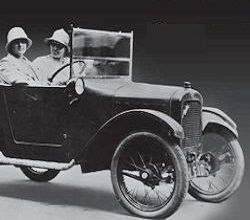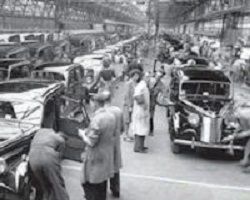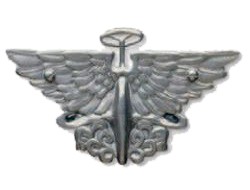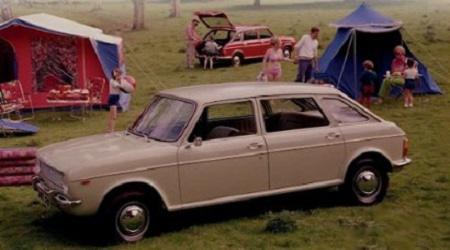Until its demise in 1988, Austin was a mainstay of the British automotive industry. Austin introduced millions of ordinary people to the joys of driving with models such as the Seven, A30, Mini, and Metro. Other highlights of the marque’s history included Austin-Healey sports cars and the Maxi-Britain’s first hatchback.

HERBERT AUSTIN, the son of a Buckinghamshire farmer, was born in 1866. When he was 17, a visiting Australian uncle persuaded him to return with him to Melbourne. There, Austin learned mechanical skills at an engineering firm by day, and studied art and design at night. In 1887 Austin became manager of a small Melbourne engineering company, through which he met Irish immigrant Frederick Wolseley, a manufacturer of sheep-shearing machines.
Austin’s firm made components for Wolseley, and together the two men refined the design of Wolseley’s machines. When Wolseley decided to move to Britain, he took the 27-year-old Austin with him to set up a factory in Birmingham.Under Austin’s stewardship, the Wolseley Sheep Shearing Machine Company expanded profitably into machine tools and cycle parts.
Austin’s thoughts then turned to cars. He saw his first automobile in Paris in 1894, and the following year built a two-horsepower, three-wheeled prototype. The Wolseley board agreed to invest in Austin’s venture, and the first Wolseley car was unveiled at the National Cycle Exhibition held at Crystal Palace, London, in 1896. Named the Wolseley Autocar Number 1, it completed a 250-mile (400-km) road test from Birmingham to Rhyl and back in 1898.

“The Austin”
Workers put finishing touches to Austin 12 sedans and vans at the Longbridge factory in 1947. The plant was affectionately referred to as “The Austin” by its workforce.
The Wolseley Voiturette, a four-wheeled development of the Autocar, followed in 1899 and the next year won first prize in an Auto Club of Great Britain 1,000-mile (1,600-km) rally. Herbert Austin yearned for his own car company, and in September 1905 he chose a disused printing works at Longbridge, near Birmingham, as the site for his factory. After assembling the necessary financing from banks and business contacts, he established the Austin Motor Company there in December 1905.
Following a frenzied four months of activity, the first 20 hp model left the works in April 1906. By the end of the year, Austin’s 50 workers had produced 26 cars. To market his cars, Herbert Austin opened showrooms in Norwich, Manchester, and then London. He promised to “motorize the masses” and create “one huge machine in which cars are produced from start to finish.” At one point the firm made everything on site apart from wheels and glass. The company’s meteoric growth in World War I was driven by orders for tanks, aircraft, and ammunition.

The payroll had reached 20,000 by 1918, but in post-war Britain the dwindling demand for Austin’s large, stately cars brought the firm to near-bankruptcy. As a last resort, Herbert Austin asked his staff to forgo their pay for a month; they did, and the company survived. The marque found success in 1922 with the Austin Seven. It was ideally suited to the times, being a cheap and thrifty ”real car in miniature.” However, the Seven’s low price also meant that the profit margin was slim. During World War II, Austin continued building cars but also made trucks and aircraft, including Lancaster bombers.
By the time of his death in 1941, Herbert Austin had manufactured more than 865,000 cars. In 1947 the 1-millionth Austin was made, signed by the entire production force, and the firm’s 2-millionth car rolled off the production line in 1952. By this stage, Austin was the world’s largest exporter of cars to the United States (although it would soon be overtaken by Volkswagen). Licensed manufacture of Austin cars had helped found BMW as a car maker in post-war Germany, and it would also trigger massive growth at Nissan in Japan.
Austin and its close British rival, the Nuffield Organization, makers of Morris cars, merged in 1952 to form the British Motor Corporation (BMC). In the same year a joint venture with the automotive engineer and designer Donald Healey led to the Austin-Healey range of sports cars, beginning with the 100/4. The Austin-Healey association was to last for 20 years. In response to fuel shortages in the UK resulting from the 1956 Suez Crisis, BMC launched the compact and cheap-to-run Mini in 1959.
Designed by Sir Alec Issigonis and produced under both the Austin and Morris marques, the Mini revolutionized small-car design with its front-wheel drive and transverse gearbox. The public fell in love with this quirky little car, and it remained in production until 2000.
Austin’s Longbridge factory made 377,000 cars in 1965-its highest annual output ever-with the main vehicles being the Mini and 1100/1300 ranges. BMC and Austin went through several further amalgamations in the mid-1960s, leading to the creation in 1968 of the British Leyland conglomerate.

Austin Maxi, 1969. The five-door, five-speed Maxi was the last car designed by Sir Alec Issigonis. This publicity photo emphasises the leisure opportunities opened up by Britain’s first hatchback.
Although cars with the Austin name continued to be produced by British Leyland, the 1970s proved to be an uneven time for the marque, with the Austin Allegro of 1973 suffering from poor design and quality. Facing insolvency, British Leyland was nationalized in 1975. Amid the gloom there were notable successes.
The Metro supermini of 1980-the first Austin model to be built with the aid of computers and welding robots-proved a credible rival to the Ford Fiesta and Renault 5. Still struggling, British Leyland was rebranded as Austin Rover in 1982. Austin remained the mainstream brand, with sporty editions being given the MG logo; the Rover marque concentrated on more luxurious models.
Launched in 1983, the Maestro-the five-door hatchback that replaced the Allegro and Maxi models-captured a sizable slice of the family-car market in the UK. The Montego of 1984 was the last model to be launched under the Austin banner. The marque name was axed in 1988, two years after Austin Rover was privatized and sold to British Aerospace, becoming the Rover Group. All cars made thereafter were classified as Rovers or MGs.